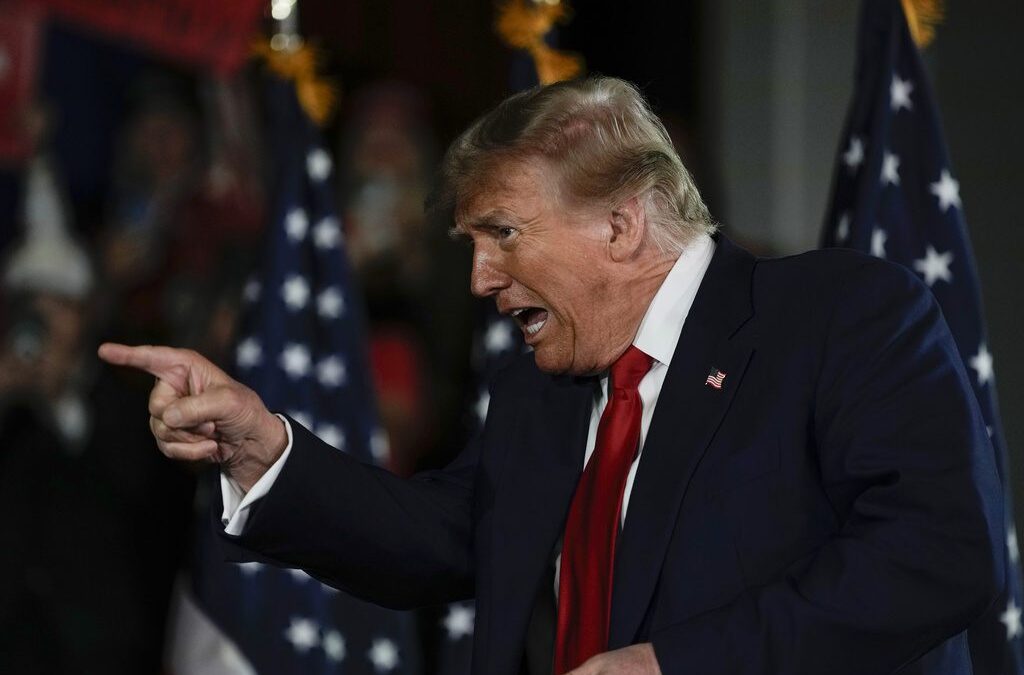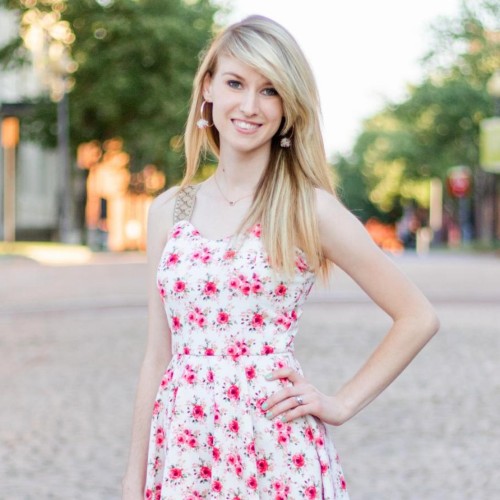
This card advertises a speech by Lila Meade (Mrs. B. B.) Valentine. before 1918. It was found in the Equal Suffrage League of Virginia Papers at the Library of Virginia. Photo courtesy of the Library of Virginia
Library exhibit highlights the struggles women went through to get voting rights.
RICHMOND – Americans gathered around the radio on Nov. 2, 1920. They weren’t listening to music or a baseball game. Instead, they wanted to know who the president would be. While Ohio newspaper editor Warren G. Harding won the election, there was a bigger victory to cheer. For the first time in American history, women in every state had a say in the result.
“For centuries, women in America had been classified as a dependent class under the responsibility of their fathers or husbands,” said Mari Julienne, an employee at the Library of Virginia. “In Virginia, for example, married women had no right to manage property that they owned until 1877. Virginia was one of the last states to enact such legislation,” Julienne said. “As dependents, women were not considered citizens with the right to vote. Because states controlled who could and couldn’t vote in elections, some western states allowed women to vote later in the 19th century.”
That wasn’t the case in Virginia, Julienne explained. The General Assembly rejected suffrage amendments to the state constitution in 1912, 1914, and 1916. The assembly also rejected the Nineteenth Amendment.
It wasn’t until August 1920, when enough other states ratified the amendment, that Virginia women could register and vote. But the struggle wasn’t over. Poll taxes and literacy tests made the process difficult, especially for Black women. A poll tax was basically a fee you paid to vote. Those who couldn’t afford the tax weren’t able to cast a ballot. Furthermore, Native American women in Virginia could not vote—the commonwealth didn’t consider them citizens 100 years ago.
Women voters ranged from a 57% high in Kentucky to a 6% low in Virginia, according to records from the time.
A Changing Landscape
As we mark 100 years since Virginia women got the right to vote, some things have changed. More than 60% of eligible women cast a ballot in Commonwealth elections. However when it comes to representation, the state still lags behind. Virginia has one woman in elected office for every 12 female residents. That ranks 47th in the nation.
Within the first decade of women voting, six women earned seats in House of Delegates. Yet from 1933 to 1953, there weren’t any ladies who snagged one of those coveted chairs.
“As recently as 2012, Virginia ranked 40th in the nation for the number of women holding political office,” Julienne said. “But 2020 was a record year for the number of women in the assembly, with a woman serving as Speaker of the House of Delegates and as speaker pro tem of the Virginia Senate.”
A diverse representation in the national spotlight boosts confidence and goal setting mindsets in young girls. It also grants grown women much-deserved leadership opportunities.
“We’re a diverse country and having [a] local, state and national government that reflects that diversity is necessary to creating a more equitable society and to living up to America’s founding ideal that all people are created equal,” Julienne said.

The Current Election
This year, both President Donald Trump and former Vice President Joe Biden vie for the women’s vote. Unlike a century ago, when women accounted for two-thirds the rate of men voters, 2020 could bode differently.
Since 1984, the Pew Research Center noted that women voters outnumbered men for every presidential election. In the most recent presidential election in 2016, 63% of eligible women voted, compared to 59% of men.
“If people don’t vote, their voices are effectively silenced,” Julienne said. “Suffragists understood that if they wanted to achieve reforms to education, labor laws, public health and other areas, that the best way to force politicians to pay attention was to have the power of the ballot to vote them out of office, as well as to be elected to office themselves. Without participation, our democracy can’t survive.”
We Demand
Providing a historical account of Women’s Suffrage in Virginia, the We Demand exhibit highlights women who fought for voting rights.
The ladies featured built up two statewide suffrage organizations, lobbied legislators, held rallies, distributed literature, and spoke on street corners. Some even went to jail.
From the state capitol to the far reaches of the Virginia-North Carolina line, females made their voices known. In Chatham, women organized the Pittsylvania County Equal Suffrage League with 50 members in 1916.
The Southside-based league didn’t come without trepidation from President Pattie Taylor Moses. Moses wrote in a 1917 letter to Edith Clark Cowles about “such a strong sentiment here against it, that the more timid have not the courage to come out and declare themselves in favor of this glorious work.” The letter is part of the Equal Suffrage League of Virginia Papers collection at the Library of Virginia.
Jim Crow Laws, racial discrimination, and segregation made attaining voting rights even harder for Black women. They could not join the Equal Suffrage League of Virginia or the Virginia branch of the National Woman’s Party. However, they also advocated women’s voting rights in their women’s club meetings, community debates, and by marching in parades. The exhibit also portrays Black women’s suffrage contributions.
Additional Resources
There are also additional collections for those interested in diving deeper into history.
“The Library is fortunate to hold the records of the Equal Suffrage League of Virginia and some records of the Virginia branch of the National Woman’s Party. These records enabled us to tell the story of two groups of women who worked for years to achieve something remarkable,” said Barbara Batson, author, exhibitions coordinator at the Library of Virginia and co-curator of We Demand. “We hope that the exhibition and the book will encourage people to research more about the role of African American women in the campaign for woman suffrage as well as more about the local campaigns.”
Both Julienne and Batson co-authored a book, The Campaign for Woman Suffrage in Virginia. It further explores the Women’s Rights movement in the commonwealth.
The We Demand exhibit extends through May 28, 2021, due to the library’s five-month pandemic closure. In addition to the exhibition at the library, there is a traveling version, with a schedule available at https://edu.lva.virginia.gov/we-demand-traveling-exhibition/
A century in the making
With early voting already underway, Virginia women will undoubtedly hit the polls soon, celebrating 100 years of voting rights.
“Keep persisting,” Julienne said. “Women in Virginia and elsewhere faced countless setbacks throughout the suffrage campaign, but they never stopped striving for their goal of voting rights, especially African American women who were forced to keep fighting decades longer to secure their right to vote.”
Politics

VIDEO: Youngkin won’t add legal protection for birth control access
Access to birth control remains vulnerable to potential future attacks after Republican Gov. Glenn Youngkin effectively blocked a bill that would...

Trump says he would allow red states to track pregnancies, prosecute abortion ban violators
In an interview published by Time magazine this week, former president Donald Trump detailed his plans for a potential second term and said he would...
Local News

The zodiac signs of 12 iconic women offer insight into their historic accomplishments
Zodiac signs can tell you a lot about someone’s personality. Whether they’re an earth, water, air, or fire sign, these 12 categories (which are...

Virginia verses: Celebrating 5 poetic icons for National Poetry Month
There’s no shortage of great writers when it comes to our commonwealth. From the haunting verses of Edgar Allan Poe, who found solace in Richmond's...





